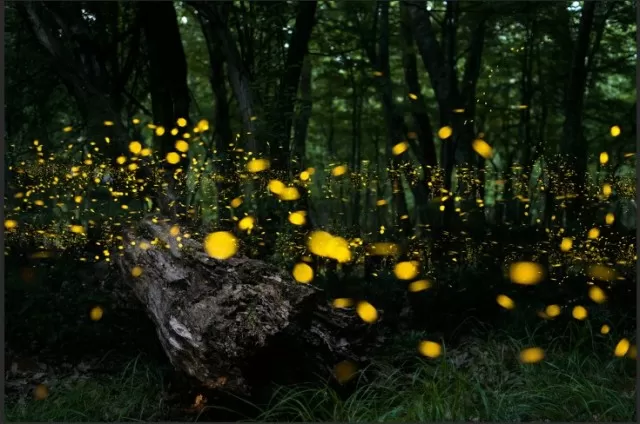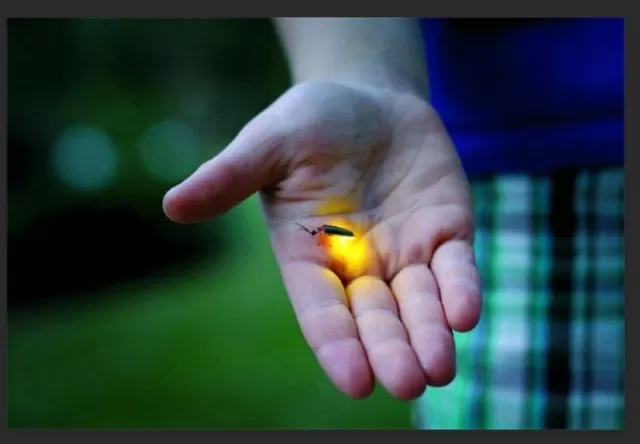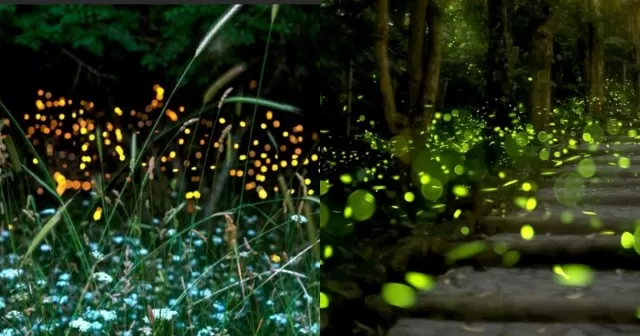Clever Methods for Inviting Fireflies to Your Yard. Transforming your yard into a haven for enchanting lightning bugs involves more than just switching on a light.
With a few straightforward steps, you can create an environment that beckons these luminous wonders and fosters a magical symphony of lights in your own backyard.By incorporating these simple and considerate practices into your yard maintenance routine, you can cultivate a space that not only welcomes lightning bugs but also contributes to the overall health and balance of your local ecosystem.
Promote the Growth of Lush Greenery to Encourage the Enchanting Presence of Fireflies.

Nurturing the natural growth of your lawn and allowing the grass to flourish has an unexpected magical benefit – an increase in the population of fireflies that grace your outdoor space with their mesmerizing glow.
These charming insects have a penchant for taller grasses and shrubs, making them more likely to visit when you resist the urge to trim your lawn too frequently or too short. .
In the sunlit hours, fireflies can often be spotted leisurely perched upon the blades of taller grass, adding a touch of enchantment to your surroundings.
However, maintaining a balance between your desire for a neatly manicured lawn and the allure of these luminous creatures is crucial. Should you prefer a well-groomed lawn or hold concerns about tick infestations, there exists a creative compromise.
Consider introducing taller ornamental grasses to the borders of your yard, allowing you to maintain the desired aesthetic while also inviting fireflies to frequent specific areas.
The likes of Fountain grass or pampas grass can be strategically planted to serve as alluring beacons for these radiant insects. In doing so, your outdoor space remains well-kempt while fostering an environment that appeals to the delicate beauty of fireflies.
Ensure Abundant Nourishment for Vibrant Firefly Habitats.
Cultivating a hospitable environment for any living creature hinges on the provision of sustenance, and fireflies are no exception.
When considering the dietary needs of these captivating insects, a multifaceted approach emerges. Fireflies source their nutrition primarily from two distinct avenues: the consumption of small garden pests, as well as the extraction of pollen and nectar from blooming flora.
Inhabitants of illuminated twilight, fireflies demonstrate a predilection for indulging in a menu of worms, slugs, snails, grubs, and other diminutive garden intruders.
To foster the presence of fireflies in your outdoor haven, it’s advisable to tread lightly on the path of pest control. Allowing a natural balance to flourish, where these small pests coexist, can attract the fireflies you desire.
Yet, it doesn’t end there.
To further beckon these luminous beings, introduce an array of flowering plants to your landscape. This botanical invitation can allure fireflies to pay a visit and perhaps extend their stay.
The allure lies in the availability of copious pollen and nectar, a delightful drink for these ethereal creatures. By establishing a haven of blooms, you set the stage for fireflies to grace your surroundings, their presence a testament to the harmonious relationship between the creatures of the night and the blossoms that grace the day.
Incorporate a Tranquil Oasis: Enhancing Firefly Habitats with Water Features.

A question often posed is, “Where do fireflies find their dwelling places?” These enchanting creatures have made their homes across various temperate regions spanning North America and the globe.
While their presence graces diverse landscapes, a common thread unites their chosen environments – the proximity of water. Fireflies exhibit a preference for locales in the vicinity of still waters or regions abundant in moisture.
If you seek to invite the luminous allure of fireflies to grace your outdoor haven, consider the subtle symphony of water features.
The introduction of elements like fountains or ponds can serve as a magnetic draw, enticing fireflies to converge upon your landscape. These gentle water bodies not only quench the thirst of the earth but also serve as beacons of attraction for these radiant insects.
However, a prudent consideration should be given, particularly in regions where the buzzing of mosquitoes is a lingering concern.
The harmonious balance between kindling the magic of fireflies and safeguarding against disease-carrying mosquitoes must be evaluated. The choice to beckon fireflies through the allure of standing water entails a conscious weighing of benefits and drawbacks, navigating the delicate equilibrium between the allure of their luminescence and the potential influx of insects that hover with a less charming intent.
Embrace the Twilight: Welcoming Fireflies Through Dimmed Illumination.
As summer unfolds its warmth and mysteries, you may find yourself pondering the elusive question, “When do fireflies emerge?” If these enchanting insects have yet to grace your yard with their presence, consider the possibility that the radiance of your surroundings may be deterring them.
A preference for shadowy realms characterizes fireflies, where the splendor of their own luminescence can more profoundly punctuate the darkness. .
Should the ambient glow of outdoor illumination, be it from porch lights or solar landscape fixtures, cast an inadvertent halo over your space, there’s a simple yet transformative measure to undertake: turn off the lights.
By embracing the natural ebb of nocturnal darkness, you can potentially beckon fireflies to partake in their mesmerizing dance amidst the obscurity.
Not only should exterior lights be considered, but the internal illumination of your home also holds significance.
Drawing the curtains and closing the blinds acts as a gentle guardian, ensuring that the inner luminance remains contained, allowing fireflies to traverse the velvet expanse outside unencumbered by competing radiance.
For those residing along bustling thoroughfares where the flicker of passing car headlights interplays with the night, crafting a sanctuary of obscurity can prove fruitful.
Planting towering shrubs or erecting privacy fences serves as an elegant gesture, casting a protective shroud against the excess illumination from the world beyond, and perhaps beckoning the fireflies to weave their luminescent tapestry undisturbed.
Cultivate a Natural Haven: Elevating Firefly Populations with Indigenous Pine Trees.

In your quest to orchestrate a captivating haven for fireflies within your outdoor realm, the role of indigenous tree species, notably the native pine trees, emerges as a pivotal factor.
Among the verdant tapestry of local flora, the presence of these stately pines bears unique significance. Their distinctive attributes, characterized by a luxuriant canopy, serve as a beacon of allure for fireflies seeking their nocturnal symphony.
Native pine trees wield a remarkable capability to ensconce their surroundings in a cloak of obscurity.
The dense arrangement of their branches forms a natural shield, meticulously filtering out external luminance. This wondrous phenomenon conjures a gathering haven where fireflies converge to share their incandescent brilliance, each gleaming light emerging unobscured against the inky backdrop.
Yet, the gifts of native pine trees don’t cease there.
Their cascading needles, as they gently descend to the earth, construct a sanctuary for firefly progeny. In this cozy haven, female fireflies find the ideal cradle to lay their eggs, nurturing the next generation within the embrace of this arboreal sanctuary.
Embracing the nurturing presence of native pine trees goes beyond mere landscaping; it’s a harmonious partnership with nature.
In cultivating these majestic trees, you forge an alliance with the ecosystem, extending a heartfelt invitation to fireflies to partake in their ethereal dance amidst the gentle rustle of pine branches.
*The information is for reference only.